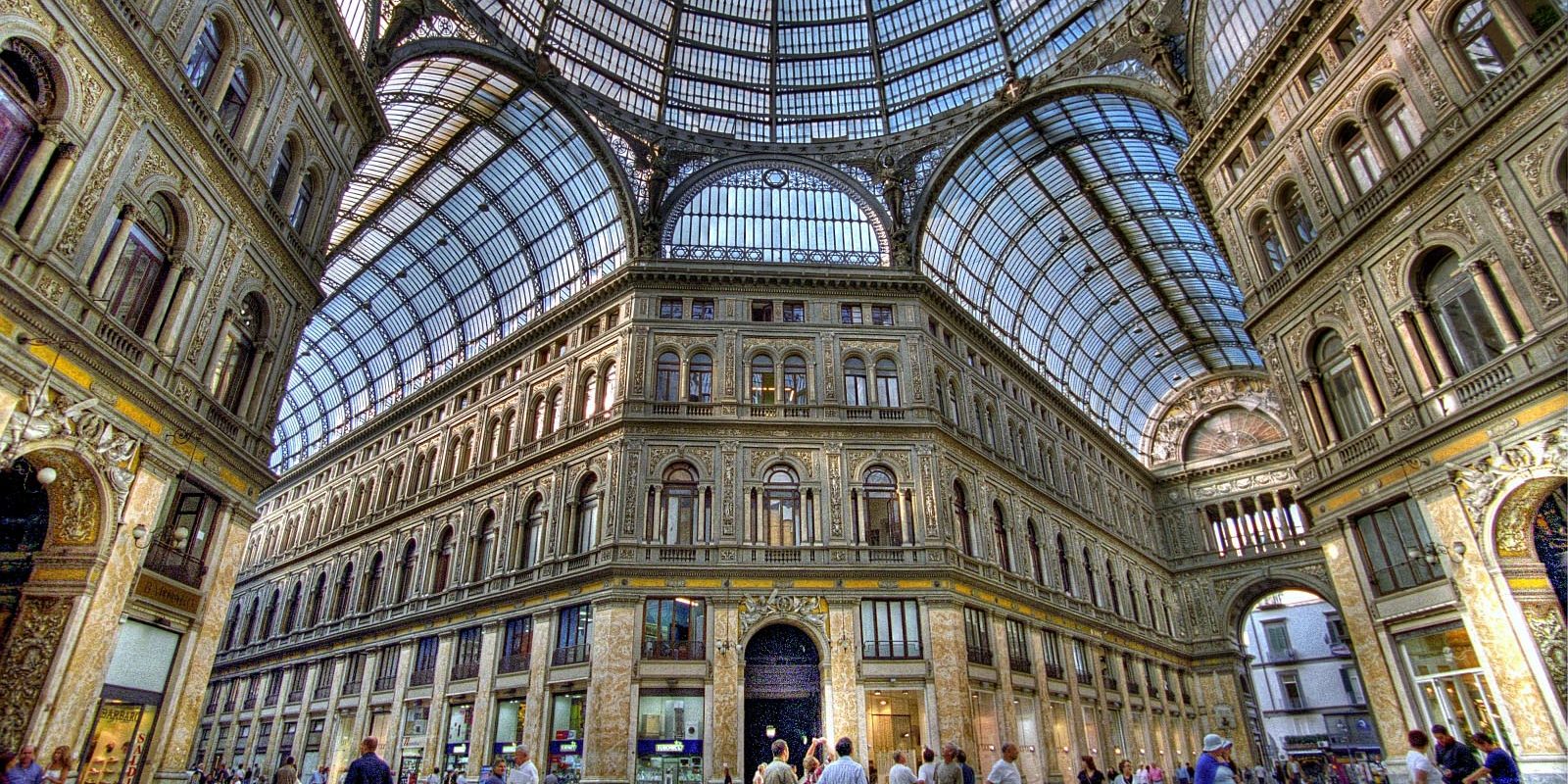
Galleria Umberto
Admiring the majesty of the Galleria Umberto I in Naples, it is difficult to believe that it was built in just 3 years. Started in 1887 and finished in 1890, it was built in the same years in which Gustave Eiffel built his famous Eiffel Tower in Paris. The Galleria Umberto I in Naples had nothing to envy to the no monument with which it rivaled for the beauty and complexity of the structure.
The numbers of this building made the head spin: maximum length 147 meters, width 15, height 34 and a half, the top of the dome at 57 meters. In a short time the Gallery became the “social” center of Naples, also thanks to its proximity to the most important places in the city.
All roads lead to the gallery
Galleria Umberto I has 4 entrances: Via Toledo, Via Santa Brigida, Via San Carlo and Vico Rotto San Carlo. The main entrance opens onto Via San Carlo and is composed of an exedra facade which at the bottom consists of a portico supported by travertine columns and two blind arches, one leads to the gallery and the other to the ambulatory. The four parts of the world are represented in marble on the columns on the sides of the left arch.
The main entrance on Via San Carlo
The first from the left symbolizes Europe and is a figure of a woman who with her right hand holds a spear leaning on it and keeping at her feet a plaque with the inscription: Corpus Juris Civilis. The second figure holds a cup and represents Asia. The third has the facial features and clothing of Africa, has a bunch of bananas with it and has the left hand resting on a sphinx. The fourth is a female figure that we could consider “Colombian” for his clear allusion to geographical discoveries: his right hand rests on a lictorial bundle and at the foot has a large volume of geographical tables with a terrestrial globe on which Columbus is written , clearly referring to America. In the niches above there are: Physics on the left and Chemistry on the right. The arch that is positioned to the right of the observer is symmetrical to the other and on the four columns that flank it there are four statues depicting Winter, Spring, Summer and Autumn. The seasons allude to the passage of time and the inevitable passage of life. In the niches above there are the Genius of Science and the Work. In the end there is a marble group depicting Commerce and Industry half-lying on the sides of Wealth. The author of these works is Carlo Nicoli from Carrara, sculptures and a pupil of Giovanni Duprè.
A little monument, a little shopping center
The Galleria Umberto was built so that there was a sufficiently large public area in the city center that was sheltered from the elements. The Gallery had not only an important commercial and social function, but also a monumental one: it certainly could not disfigure compared to the artistic beauties in its vicinity such as the Maschio Angioino, the basilica of San Francesco di Paola, the San Carlo theater and the Royal Palace. In a short time the Gallery concentrated workshops, professional studios, newspaper editors, offices and fashion ateliers until it became one of the places where the small and large events of the city of Naples happened.





